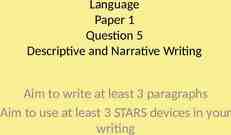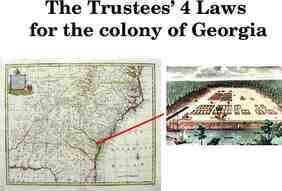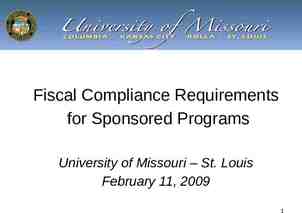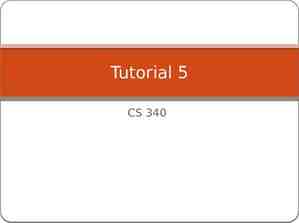Development Processes and Organizations Teaching materials to
32 Slides1.62 MB
Development Processes and Organizations Teaching materials to accompany: Product Design and Development Chapter 2 Karl T. Ulrich and Steven D. Eppinger 5th Edition, Irwin McGraw-Hill, 2012.
Product Design and Development Karl T. Ulrich and Steven D. Eppinger 5th edition, Irwin McGraw-Hill, 2012. Chapter Table of Contents: 1.Introduction 2.Development Processes and Organizations 3.Opportunity Identification 4.Product Planning 5.Identifying Customer Needs 6.Product Specifications 7.Concept Generation 8.Concept Selection 9.Concept Testing 10.Product Architecture 11.Industrial Design 12.Design for Environment 13.Design for Manufacturing 14.Prototyping 15.Robust Design 16.Patents and Intellectual Property 17.Product Development Economics 18.Managing Projects
Concept Development Process M is s io n S ta te m e n t Id e n tif y C u s to m e r N e e d s E s t a b lis h T a rg e t S p e c if ic a t io n s G e n e r a te P ro d u c t C o n c e p ts S e le c t P ro d u c t C o n c e p t( s ) Test P ro d u c t C o n c e p t( s ) P e r f o r m E c o n o m ic A n a ly s is B e n c h m a r k C o m p e titiv e P r o d u c ts B u ild a n d T e s t M o d e ls a n d P r o t o t y p e s Set F in a l S p e c if ic a t io n s P la n D o w n s tre a m D e v e lo p m e n t D e v e lo p m e n t P la n
Generic Product Development Process Planning Planning Concept Concept Development Development Mission Approval System-Level System-Level Design Design Concept Review System Spec Review Detail Detail Design Design Testing and Testing and Refinement Refinement Critical Design Review Production Production Ramp-Up Ramp-Up Production Approval
Core development stages Solution approach Concept design Architectural design Detailed design Process design Fabrication and assembly Test and deployment 06/25/23 6
Solution Approach Concept for solutions DFX 06/25/23 7
Concept development A description of the form, function, and features of a product A set of specifications An economic justification of the project. 06/25/23 8
System (architectural) design Definition of product architecture, with an assembly layout. Division of the product into subsystems and components, each with a functional specification. 06/25/23 9
Detailed design Complete specification of the geometry, materials, and tolerances of each of the unique parts Identification of all standard parts to be purchased. Establishment of a process plan and tooling 06/25/23 10
Test and refinement Construction and evaluation of multiple pre-production versions of the product. Early (alpha) prototypes are usually built with productionintent parts (but may not be with the intended production processes) for testing in the designer's environment, if the design intent and key customer needs are met. Later (beta) prototypes are built with parts supplied by the intended production processes (but may not be with the intended-assembly process), tested by customers in their environment, and to evaluate product performance and reliability. 06/25/23 11
Production ramp-up The product is made using the intended production system. To train the work force and to work out any remaining problems in the production processes. 06/25/23 12
A generic concept development process 1. 2. 3. 4. 5. 6. 7. 8. 9. 10. Identifying customer needs Establishing target specifications Concept generation Concept selection Concept testing Setting final specifications Project planning Economic analysis Benchmarking of competitive products Modeling and prototyping 06/25/23 13
Rapid Iteration PD Process Many Iteration Cycles Planning Planning Concept Concept Development Development Mission Approval System-Level System-Level Design Design Concept Review Design Design Cycle Plan Review Build Build Test Test Cycle Review Production Production Ramp-Up Ramp-Up
Complex System PD Process Design Test Design Test Planning Planning Concept Concept Development Development Mission Approval System-Level System-Level Design Design Concept Review System Review Design Design Test Test Design Test Design Test Design Test Design Test Integrate Integrate and andTest Test Validation Validation and andRamp-Up Ramp-Up Production Approval
Concept Development Process Mission Establish Generate Stateme Identify Customer Target Product nt Needs Specifications Concepts Development Select Test Set Plan Plan Product Product Final Downstream Concept(s) Concept(s)Specifications Development Perform Economic Analysis Benchmark Competitive Products Build and Test Models and Prototypes Front-end of PD need not be a fuzzy process. Structured methods exist for each process step (see text chapters 4 to 8). This is not strictly sequential -- generally a parallel and iterative process.
Tyco Product Development Process Project Registration RP 0 Concept Definition Feasibility and Planning RP 1 RP 2 Preliminary Design Final Design RP 3 Product Verification RP 4 Process Verification RP 5 Launch RP 6 Post-Launch Assessment RP 7 RP 8
Tyco Product Development Process
Organizational types Strict functional organization Strict project organization Matrix organization 06/25/23 20
Matrix organization A hybrid of functional and project organizations Each individual is linked to others according to both the project they work on and their functions Each has two supervisors: project manager and functional manager. Two variants of the matrix organizations – Heavyweight project organization (i.e., strong project links). – Lightweight project organization (strong functional links). 06/25/23 22
Factors for affecting an org. structure Importance of cross-functional integration Criticalness of cutting-edge functional expertise to business success Utilization of resources from each function Importance of product development speed 06/25/23 23
Organizational linkages 06/25/23 Reporting relationship Financial arrangement Physical layout. 24
Other Images
Variants of the development process Market pull products Technology push products Platform products Process-intensive products Customized products high-risk product Quick build products Complex systems 06/25/23 26
Variants Market-pull products – The firm finds a market opportunity and a technology to meet customer's needs. Thermo care. Technology-push products – The firm begins with a new technology and then finds a market for it. Glue for “post-it.” Platform products – Use of a proven technology platform to build a new product. Instant film used in Polaroid cameras. Process-intensive products – Develop product and process simultaneously. 06/25/23 27
Variants Customized products – Build a new product by varying existing configurations. High-risk products – Intensive and early test and analysis Quick-build products – Rapid modeling & prototyping at testing phase Complex systems – Subsystems and integration worked by teams 06/25/23 28
Traditional design methods Aggregation – (include new functions) Adaptation – (adapt to new conditions) Application – (apply a proven technology to a new area) analysis of properties – (thorough analysis of an existing design to improve) Brainstorming – (find many solutions to a problem) 06/25/23 29
Traditional design methods systematic search of field – (obtain complete possible information) Questioning – (apply a system of questions to produce mental simulation) mental experiment – (observe an idealized mental model at work) value analysis Evaluation – (find best variant among a few by point-counting) 06/25/23 30
Traditional design methods invention Iteration – (to solve a interactions) system with complicated experimentation division of totality math & computer modeling 06/25/23 31
Chapter 2: Home work Exercise (Analysis of Properties) Focus on materials selection for an existing product Steps: 1. Examine each component of a product (an incandescent bulb, stapler, can opener). 2. Break the product or decompose it, avoiding injury to eyes or hands and damage to the other components. 3. Construct and complete a table consisting the following items on its columns. – a. list each component of the product – b. define the function of each component – c. identify the material used – d. reason why it was selected – e. select possible alternative. 4. List five failure mechanisms 06/25/23 32





































